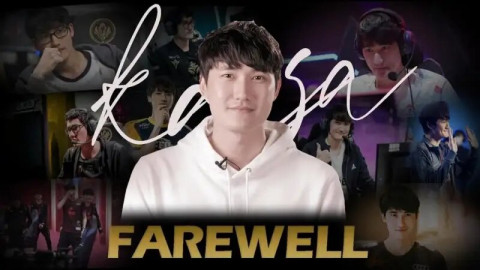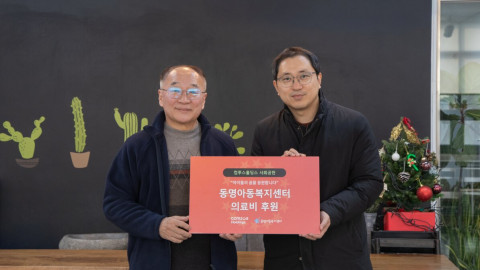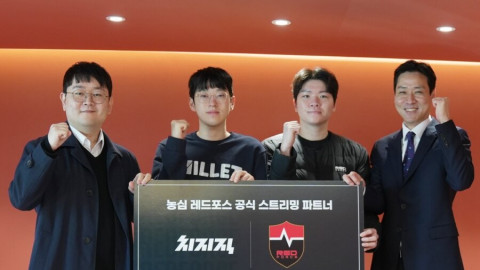This year, G-Star had the most number of visitors in the history of G-Star, with 240,000 people making their way to the game exhibition. Despite the G-Star regular, Nexon, not attending this year, it has been a success overall. However, the success was short lived, as it also left many industry insiders with a lot of homework. Henry Chang, the CEO for WeMade, has forewarned a change during a press conference at G-Star, saying “It’s becoming more about the users, not the developers announcing new games.”
Even so, this year’s exhibition was a teaser to the blueprints of next-gen games. If the mobile games, influencers, esports, and the models were the main focus of G-Star, it’s very encouraging to see the change.

Pearl Abyss has marked the start of a cross-platform era. No doubt, the developer that received much praise and attention was Pearl Abyss. Pearl Abyss has revealed their new game titles, Shadow Arena, Plan 8, DokeV, and Crimson Desert, all to be released on PC. Excluding Shadow Arena, Pearl Abyss is preparing to cross-platform the other game titles on consoles as well.
In an age where mobile games thrive, Pearl Abyss chose to connect the platforms, PC and consoles. Change occurs in cross-platforming via major game developers, and a prime example for this is NCSoft’s ‘ProjectTL’. In the early stages of developing ‘ProjectTL’, it was the next-gen Lineage IP. Soon after, NCSoft confirmed ‘ProjectTL’ to be released on console. MiYoHo’s ‘Genshin Impact’, which was revealed at this year’s G-Star, will also be released as a cross-platform game.
PC-Console cross platforming has the potential to target both the Eastern and the Western market. The related IT technology development also synergizes well in the cross-platform market. The technologies used in 5G communications and cloud gaming is closely related to the cross-platform market. PS4, a major console system used in gaming, has already sold over 100 million units, and the next-gen console system, PS5, will be released in 2020. The cross-platform games that have been announced will be released around then as well, so the next-gen console system will add fuel to the fire in the cross-platform market.

Young Gamers are here. If cross-platform next-gen games are what attracts the OG gamers, the young gamers are the main target market for mobile games and mobile esports. To be honest, it was quite odd to see Supercell step up to be the main sponsor for G-Star. The popularity of their game, ‘Brawl Stars’, was something that was only experienced through the reporter’s young nephew. The same nephew, who was in grade 3, told the reporter that kids who are good at the game are popular among friends. The initial reaction to it was, “I see”, because the reporter was already an established gamer.
However, when many young gamers that came to G-Star with their parents, that’s when everyone realized that Supercell was right. At the center of all the young gamers’ attention, was Supercell’s ‘Brawl Stars.’ Not only did we see the young gamers enjoy playing ‘Brawl Stars’ at G-Star, they’ve also actively took place in various activities that won them goods related to the game. For the reporter, his idol was Starcraft pros like BoxeR, and the generation after that looks up to League of Legends pros like Faker. However, this year’s G-Star made everyone realize that these young gamers will be looking up to Brawl Stars pros.
The focus on these young gamers making their way to the exhibition with the family is nothing but good news for G-Star. However, the disappointment that these children faced due to lack of experience really needs to be looked at. There was an incident where the world finals for Brawl Stars suddenly changed to a 12+ event. Although the organizing committee responded that the initial announcement went out wrong because of internal confusion, the young gamers that came to watch their favorite Brawl Star pros was left disappointed. In the industry, there must never be cases where the young gamers are left disappointed.

The goods market is growing. There’s a long line for each goods shops. The Blizzard and League of Legends goods shop were especially well-received among the gamers. Many products were quickly sold out, and character goods were especially popular.
Every game developers had a different method of providing goods. Brawl Stars, a game that’s especially popular with young fans, only sold and provided goods through official events. This year, they’ve again only gave out their merchandise to gamers that participated in their events. Netmarble gave out goods through a raffle to all the gamers. Pearl Abyss sold their Dark Spirit figures by showcasing them via classes. Niantic gave out keychains and stickers through the Illumise event, a Pokemon that was previously unavailable in Korea, and was exclusively catchable at G-Star.
Games are an intangible software, so goods are a way for gamers to feel and touch their favorite game. In the past, goods were only given out to gamers that participated in a developer’s events. However, it represents something far more. For a gamer to buy goods, means the representation of the gamer’s love for a game, and for companies, marketing wise, brainstorming on how they can get gamers to buy the goods from a game can be a step in the right direction.

There needs to be more ‘care’ put into indie developers. This year’s G-Star had record-breaking numbers for the amount of visitors at the game exhibition. However, the indie showcase did not play a part in those numbers. Being a couple hundred meters away from the main B2C hall, the indie showcase event was empty from start to finish. Even just finding where it is proved to be a difficult task.
For participants of the indie showcase, the opportunities to meet with users are extremely important. They must’ve prepared meticulously for G-Star, yet the neglected event hall did not bring in any new visitors. It was empty throughout all of G-Star, and the indie game developers were disappointed to say the least.

Meanwhile, despite the cold weather, the outdoor BIC booth was visited by many gamers. Although the indie showcase and the BIC booths were same in topic, they were met with drastically different results. In a festival, where visitors go is very important, and if the organizing committee took a little more care into the indie showcase, things would’ve been much different. While G-Star ‘took care’ of the indie showcase booths by holding them for free, a ‘worriless care’ can lead to disappointment. Hopefully, things will be revamped for G-Star’s indie showcase.

Bexco’s too small. This has been a problem for a very long time. As more visitors come enjoy G-Star, the amount of space that a visitor has to enjoy the exhibition becomes more limited. The real issue is that it’s hard to find a solution. While less space at an event hall means success, if it comes to a point where it’s hard to enjoy the event, it’s a totally different story. It means that it’s time to find somewhere new, but it’s hard to find a place that’s as good as Bexco.
A possible solution to this problem is holding the event at Shanghai New International Expo Center, an exhibition hall that hosts Chinajoy each year. However, the reality of the situation is that creating a space that big is too unrealistic in Korea. Although Bexco’s small, there’s no realistic solution to this problem.
They say that the fish is big as it’s bowl. The size of Bexco shows the limitations of Korea’s game exhibitions. In order for G-Star to grow even bigger, different solutions are required. However, a problem like the size of the exhibition hall cannot be solved in a short amount of time. In order for the game industry to grow as a whole, it’s time for the government to step up and solve this problem.
-

-

Striving for perfection to achieve excellence in esports
Sort by:
Comments :0





